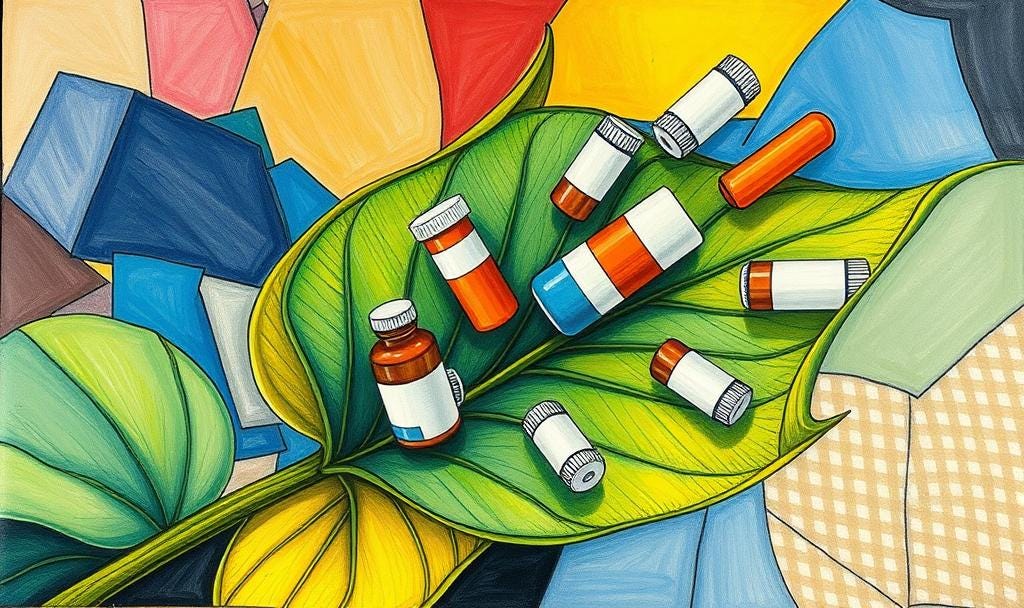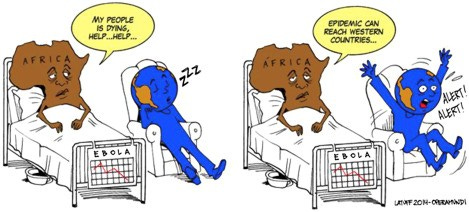It sounds a bit like science fiction, but growing pharmaceuticals in plants is a process that has existed for at least two decades. Genetically-Engineered Pharmaceutical-Producing Plant Varieties (GEPPVs) plants are engineered to “grow” a drug, antibody or other pharmaceutical biologic or even industrial chemicals.1
Genetically-Engineered Pharmaceutical-Producing Plant Varieties (GEPPVs) Regulation
The U.S. Department of Agriculture regulates all of these plants as genetically-modified (GM) plants, typically with either a permit or notification process; but for GEPPVs a permit is always required. Since GEPPVs carry more risk, the field trials are overseen by USDA/APHIS (the research office of USDA) and require an Environmental Assessment (EA) and/or an Environmental Impact Statement (EIS) under the National Environmental Policy Act.
USDA has not created a different process for biopharming but uses enhanced measures to address the increased risk of biopharming plants. The requirement for buffer zones around field trials is doubled for biopharma crops and the objective is to “minimize” contamination of other crops, because the risk will never be zero in a field trial. USDA also keeps the location of field trials as a trade secret in order to avoid vandalism, and also does not require the disclosure of the type of pharmaceutical or the name of the grower to neighbors or the public.
The FDA also regulates biopharming products. FDA must ensure the pharmaceutical or drug meets the standards under the FDCA for safety and efficacy. If the drug is a “biosimilar” it will follow a shorter regulatory pathway. For example, in 2014, FDA gave “fast track” authority for the development of the drug ZMapp for emergency use with Ebola patients. When a drug is needed for a public health emergency, “fast track” authority can push the drug through the regulatory process if the drug is more beneficial than existing therapies.2
This multi-layer process for approval of biopharming has made development more difficult, but the risk-benefit protocol prioritizes safety.
Experimenting in open field trials
BioPharming, or the production of crops which are designed to produce pharmaceuticals and the threat of cross-pollination from these GEPPVs (genetically engineered, pharmaceutical-producing plant varieties) increases their risk in field trials. More than 30 states have permitted biopharming trials and Hawaii is one of the most active states for biopharming, according to permits issued by the USDA.
In 2005, the first litigation over permitting biopharmaceuticals came with a concern over the extensive use of Hawaii for these field experiments. The permitting of these experiments had been granted a categorical exception by EPA, meaning they would not be required to comply with NEPA. However, in Center for Food Safety v. Johanns,3 the court agreed with the plaintiffs that the agencies had violated the law by not following the NEPA and ESA procedures in 2006.
Growing Vitamin A
Golden Rice
Golden Rice is a variety of rice genetically engineered to biosynthesize beta-carotene, a precursor of vitamin A. This rice was developed in an attempt to offer a convenient self-sustaining solution to areas suffering from a shortage of dietary vitamin A. In many developing parts of the world, vitamin A deficiency represents a prominent health problem, with 670,000 children under the age of five estimated to be killed each year. While the primary means of combating vitamin A deficiency involves the use of vitamin supplements, the local cultivation of Golden Rice could offer a simpler and less expensive alternative in areas where rice is a staple food. The company that developed Golden Rice, Syngenta, has offered royalty-free use of the patented product for subsistence farmers who make less than $10,000 per year on the produce. Despite these efforts, Golden Rice has been met with significant opposition from environmental and anti-globalization groups. Some of the primary concerns include the potential contamination of native rice with genetically modified rice; the large amount of Golden Rice required to be ingested to meet the minimum vitamin A daily requirement; and the avoidance of the issue of a lack of green, leafy vegetables in the diet of affected persons. At present, research continues on the feasibility of using Golden Rice as a solution to global vitamin A deficiency.
The Philippine Department of Agriculture approved the safety of bioengineered rice, also known as golden rice, for use as human food and in 2021 approved it for planting and growing commercially.4
Golden rice was evaluated and approved for consumption in the United States, Canada, New Zealand and The Philippines.5
In the highly controversial Golden Rice case, there were concerns that a child might get an overdose of Vitamin A if it was available in unregulated dosages such as when it is in a food staple, like rice. However, after further research, it was determined that a significant amount of rice had to be eaten just to try to reach the minimum daily requirements of Vitamin A. Further research found the body has a self-regulating ability for converting beta-cartene to Vitamine A, making it safe.6
Growing Vaccines in Plants—ZMapp
ZMapp is a therapeutic that was developed as a rapid response to Ebola in the 2013-2014 epidemic. The World Health Organization and the western hemisphere was slow to respond to the epidemic emerging in three of the countries of western Africa (Ivory Coast, Guinea, Liberia). But once Ebola began to spread beyond Africa, the efforts to develop a vaccine and therapeutics accelerated their development. Exacerbating the situation, there was an intense distrust among the people of west Africa of western countries profiting from a vaccine as well as a distrust of their own corrupt governments.
From, Adnan I Qureshi, “West Saharan Response to Ebola Virus Disease Epidemic,” chapter in Ebola Virus Disease: From Origins to Outbreak (Elsevier, 2016) at https://www.sciencedirect.com/book/9780128042304/ebola-virus-disease (open source at Science Direct).
Meanwhile, over the course of years, hundreds of U.S. scientists had been engaged in research for a vaccine or “cure” for Ebola.
The reproduction of cells in the tobacco leaf had been an ongoing research process already for about a decade. When the opportunity arose to apply this urgent need to develop antibodies to Ebola, the company, ZMapp was successful with this biotechnology process. A company in Kentucky was hired for the growing process, Kentucky Bioprocessing, a subsidiary of Reynolds America, experts in tobacco cultivation.
Although ZMapp had not been tried on any human subjects, it was determined to meet the experimental use category (EUA) of FDA for use on Ebola patients in October 2014. The World Health Organization also determined it met the requirements through its emergency use in public health emergencies protocol, Monitored Emergency Use of Unregistered and Investigational Interventions (MEURI). 7
A brief account of the course of the Ebola epidemic in west Africa is given in a book by Michael B.A. Oldstone and Madeleine Rose Oldstone, in Ebola's Curse, 2017:
At this Doctors Without Borders center where Khan now awaited help were others infected with Ebola and also gravely sick. Yet, the center had barely enough ZMapp for three or four persons. Despite his eminence, Dr. Khan was not told that ZMapp was available. The choice of which patients received ZMapp lay primarily in the hands of a team at the Canadian company that made ZMapp and members of Doctors Without Borders at the Kailahun treatment center. But they were not the only decision makers. Also involved were representatives from the World Health Organization, Center for Disease Control and Prevention, and National Institutes of Health. Despite the danger of progressive disease as time passed, the health officials deliberated while considering that neither the antibody’s therapeutic effectiveness nor its side effects were known. In the end, they decided not to tell Khan about ZMapp or ask if it could be used on him. Instead, the ZMapp was transported to Guinea where two Ebola-infected victims were treated: a volunteer American physician, Kent Brantly, and a volunteer American health worker, Nancy Writebol, both from Samaritan’s Purse charity. Later a priest, Miguel Pajares, from Spain was also given ZMapp. The first two survived but the priest died.
The WHO approved ZMapp in the 2018-19 Kivu Ebola outbreak in the Democratic Republic of the Congo under the MEURI protocol. However, the newer drug, REGENERON, was purportedly more effective than ZMapp and in August 2019, the Democratic Republic of the Congo's national health authorities, the World Health Organization, and the National Institutes of Health announced ZMapp would no longer be used to treat Ebola because REGENERON was said to be much more effective. REGENERON was developed in response to the COVID-19 need for therapeutics, was the first drug to be approved by the FDA as an approved treatment for Ebola, October 2020.8
Here are a few more examples of biopharmaceuticals and the plants that grow them:
Mouse interleukin-12 (IL-12): Produced in tomato leaf and fruit
Human epidermal growth factor (hEGF): Produced in tobacco
Human basic fibroblast growth factor (bFGF): Produced in soybean
Elelyso (taliglucerase alfa): Produced in carrot cells (2012)
Palforzia (AR101): An oral peanut-protein immunotherapy developed using whole plants (2023)
The production of biopharmaceuticals is trending upward and more can be expected. But biopharma does not stop with plants. In another “unintended consequences” the use of animals and their regulation for biopharma will be examined.
https://pubmed.ncbi.nlm.nih.gov/15496527/
https://www.fda.gov/patients/fast-track-breakthrough-therapy-accelerated-approval-priority-review/fast-track
451 F.Supp.2d 1165 (D.Hawai'i 2006).
https://www.goldenrice.org/Content2-How/how4_regul.php
https://www.goldenrice.org/Content2-How/how4_regul.php
https://pmc.ncbi.nlm.nih.gov/articles/PMC6132390/





